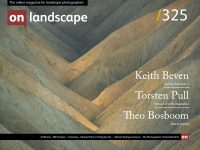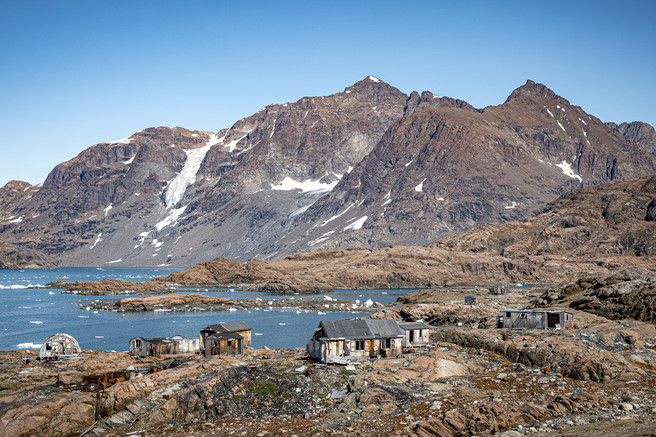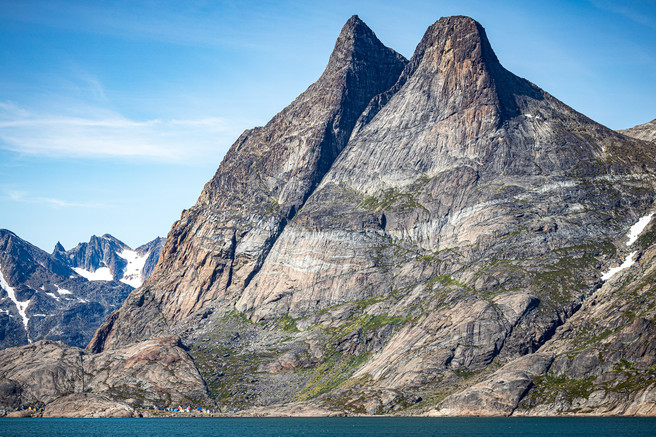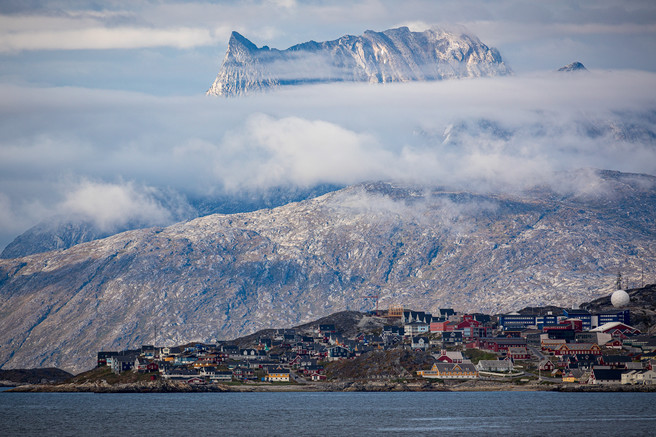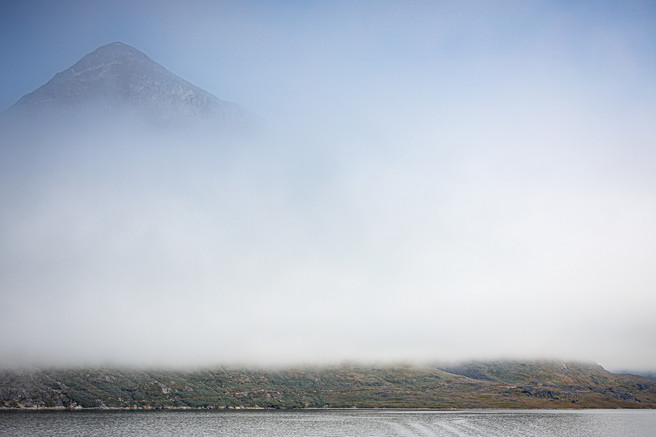Hilary Barton

Hilary Barton
I've always taken "snaps" on holiday, but I fell in love with "real" photography 8 years ago on an expedition through the New Zealand Sub-Antarctic Islands to Mawson's Huts in Antarctica. I also fell in love with the polar regions and I return whenever I can.
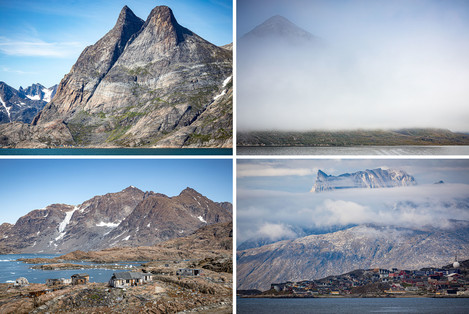
From the time of the Vikings onwards, the settlements of man have been dwarfed by the magnificent mountains of Greenland.
Hvalsey is the site of Greenland's largest, best-preserved Viking ruins. Erik the Red, a Viking explorer, sailed to "a somewhat mysterious and little-known land" in 982. When Erik returned to Iceland, he brought with him stories of "Greenland". Erik deliberately gave the land a more appealing name than "Iceland" in order to lure potential settlers. The farmstead of Hvalsey on the south west coast was established by Erik the Red’s uncle in the late 10th century. The church, dating from about 1300, can just be seen as a tiny ruin the bottom right hand corner of the image, which shows the magnificent scale of the mountain behind it.
Aappilattoq is the only settlement in Prins Christian Sund, a waterway that separates the mainland from an archipelago at the southernmost tip of Greenland. The settlement was founded in 1922. Today there are about 150 inhabitants and their average age is just over 30. They make their living from hunting and fishing. The colourful settlement has a local authority service house, general store, general repairs workshop, fire station, school, church and heliport. The peaks that dwarf the village that clings to the water's edge are almost 2000m high but are unglaciated.
Over the last 30 years, many of the isolated smaller settlements without modern amenities have been abandoned and people have migrated to larger towns. This unnamed Inuit hunters’ colony in Kangerdlugssuak Fjord in East Greenland was abandoned in July 1987 (according to the graffiti). The people probably moved south to Tasiilaq, which is the largest settlement on the east coast with 2000 people and growing fast. The surrounding mountains were formed by magma from the earth's interior, forced into the earth's crust.
Nuuk is the largest city of Greenland. At 18,000 inhabitants, it accounts for one third of the population, and it is also growing fast. It is the most northerly capital in the world, just south of the Arctic circle on the west coast. The area was occupied by pre-Inuit people by about 2000BC. The Vikings settled there between 1000 and 1400. More recently it was inhabited by the Inuit. The modern town was founded by the Danish in 1728. The summit of Sermitsiaq, a 1210m tall mountain, is visible from most places in Nuuk.

